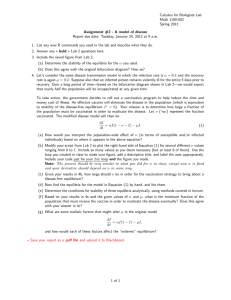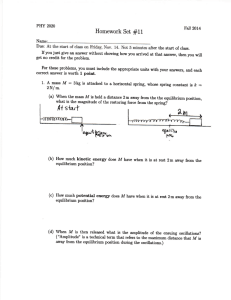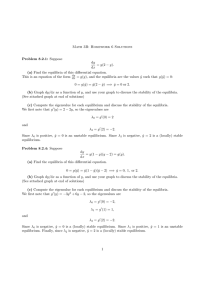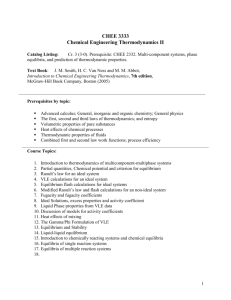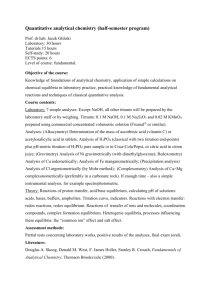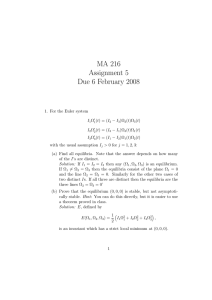MATH 147 Lab Key #10 4/19/2016
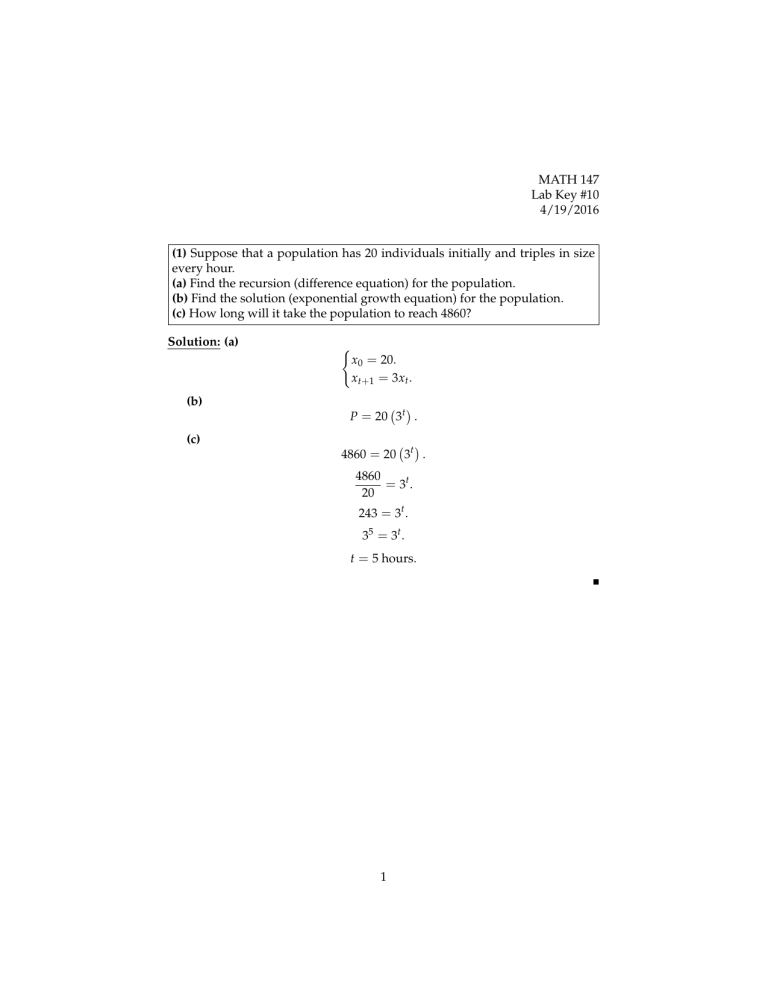
MATH 147
Lab Key #10
4/19/2016
(1) Suppose that a population has 20 individuals initially and triples in size every hour.
(a) Find the recursion (difference equation) for the population.
(b) Find the solution (exponential growth equation) for the population.
(c) How long will it take the population to reach 4860?
Solution: (a)
( x
0
= x t + 1
20.
= 3 x t
.
(b)
P = 20 3 t
.
(c)
4860 = 20 3 t
.
4860
= 3 t
.
20
243 = 3 t
.
3
5
= 3 t
.
t = 5 hours.
1
(2) Consider the difference equation x t + 1
=
9
10 x
2 t
+ x
2 t
.
(a) Find all equilibria, and use the stability criterion to determine their stability. (You do not need to discuss oscillations.)
(b) Use cobwebbing to determine the limiting value lim t → ∞ x t
, if x
0
= 3.
Solution: (a) We need to solve x =
9
10 x 2
+ x 2
.
9 x + x
3
= 10 x
2
.
x
3
− 10 x
2
+ 9 x = 0.
x x
2
− 10 x + 9 = 0.
x ( x − 1 ) ( x − 9 ) = 0.
Therefore, the equilibria are at x
∗
= 0, 1, 9.
Now, to use the stability criterion, we need to find f
10 x
2
9 + x 2
. Using the quotient rule,
0
( x
∗
) , where f ( x ) = f
0
( x ) =
20 x 9 + x
2 − 10 x
2
( 2 x )
( 9 + x 2 )
2
=
180 x
( 9 + x 2 )
2
.
Note f
0
( 0 ) = 0, f
0
( 1 ) =
180
100
= 1.8, and f has locally stable equilibria at x f
0
( 9 ) =
180 · 9
( 9 + 81 )
2
=
1620
8100
< 1. Therefore,
= 0, 9 and an unstable equilibrium at x = 1.
(b) t lim
→ ∞ x t
= 9.
2
(3) Consider the discrete logistic equation:
N t + 1
= N t
1 + R 1 −
N t
100
.
(a) Find all equilibria (fixed points).
(b) If R = 0.5, which equilibrium is stable?
(c) Do solutions approach the stable equilibrium with or without oscillations?
Justify your answer.
Solution: (a) We need to solve
N = N 1 + R 1 −
N
100
.
N = 0 is one solution to this equation. If we suppose N = 0, then
1 = 1 + R 1 −
N
100
.
0 = R 1 −
N
100
Here R > 0, so
1 =
N
100
.
∴ N = 100.
Therefore, the equilibria are N
(b) If R = 0.5,
= 0, 100.
.
f ( N ) = N 1.5
−
N
200
= 1.5
N −
1
200
N
2
.
∴ f
0
( N ) = 1.5
− 0.01
N .
Hence, f
0
( 0 ) = 1.5
> 1 and stable equilibrium is at N = f
0
( 100
100.
) = 1.5
− 1 = 0.5
< 1. Therefore, the locally f
0
(c) Solutions approach the stable equilibrium without oscillations, since
( 100 ) > 0.
3

